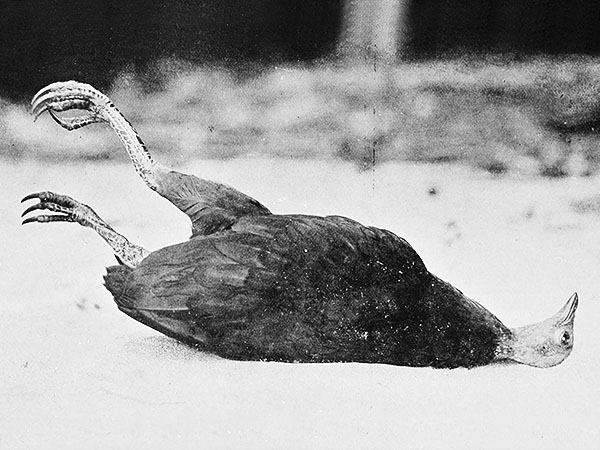Helfer’s Ampelocissus Wine (Ampelocissus helferi)
This climbing wine was described in 1887; it inhabits the forests of the Andaman Islands in the north-eastern Indian Ocean.
The species is known from only two collections that were both made around the same time; it might be still existing but is mentioned here for the sake of completeness.
***
syn. Vitis helferi M. A. Lawson
*********************
edited: 15.08.2022
Tag Archives: Andaman Islands
Prismatomeris fragrans ssp. andamanica (Ridl.) J. T. Johanss.
This subspecies of the Fragrant Prismatomeris (Prismatomeris fragrans E. T. Geddes) was originally described as a distinct species in 1940; as its name implies, it is restricted to the Andaman Islands.
This plant was not found recently and is thought to be possibly extinct.
*********************
edited: 24.08.2022
Megapodius sp. ‘Andaman Islands’
Andaman Islands Megapode (Megapodius sp.)
The Andaman Islands are the northern part of a chain of islands in the Golf of Bengal, the southern part is made by the Nicobar Islands.
The Nicobar Islands are inhabited by an endemic megapode species, the Nicobar Megapode (Megapodius nicobariensis Blyth) (see photo below), which occurs there with two subspecies which are separated by the rather narrow Saint Georges Channel.
There are some accounts which mention megapodes from the Andaman Islands.:
“Although we only obtained this species in the Nicobars we saw what were apparently mounds made by this species on Table Island off the [island of] Great Cocos, and the Lighthouse-keeper described to me brown hen like birds with large feet that he had shot on the island on several occasions, and which can scarcely have been anything but this species.” [1]
This account most likely did not refer to the Nicobar Megapode but to another, now extinct form.
***
The British Museum of Natural History in London, Great Britain, keeps a six days old chick specimen that apparently was collected on Preparis Island even more northerly in the Andaman Island chain, which obviously clearly differs from the chicks of the Nicobar species by its more pronounced sooty grey and rufous bars on the upper wings, tertials, lower mantle, and back, and by broad pale cinnamon fringes and black submarinal marks on its secondaries. [2]
*********************
References:
[1] A. Hume: The islands of the Bay of Bengal. Stray Feathers 2: 29-324. 1874
[2] Darryl N. Jones; René W. R. J. Dekker; Cees S. Roselaar: The Megapodes. Oxford University Press 1995
*********************

Photo from: ‘C. Boden Kloss: In the Andamans and Nicobars; the narrative of a cruise in the schooner “Terrapin”, with notices of the islands, their fauna, ethnology, etc. London: J. Murray 1903’
(not in copyright)
*********************
edited: 06.03.2020
Cryptocarya ferrarsii King ex Hook. f.
The Andaman Cryptocarya, a little tree described in 1886, is known only from the type collection that was made on Middle Andaman Island in the Andamans, India.
The species has not seen since and is believed to be extinct.
*********************
edited: 13.11.2021
